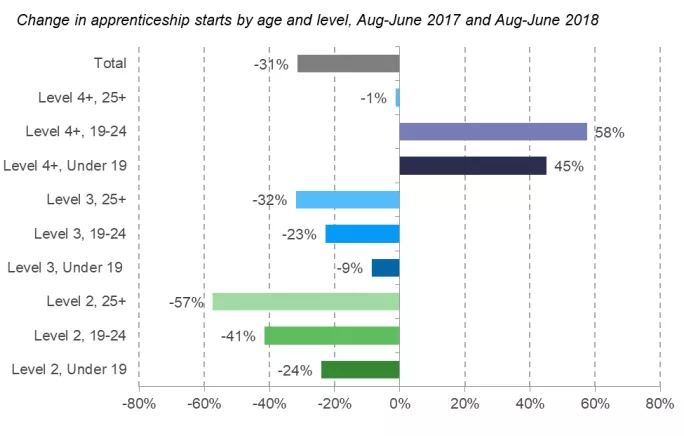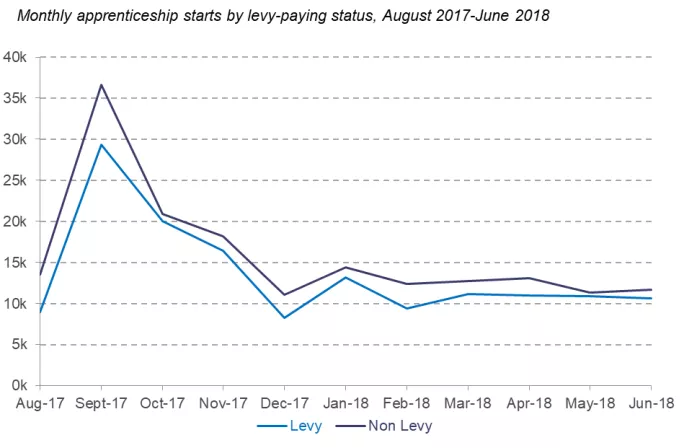While the academic year gets into full swing and scores of new apprentices are beginning their training, the Department for Education has published its latest round of apprenticeship figures looking at the number and composition of starts for June.
If we were to find a theme in this month’s data, it could be continuity in change - the system continues to shift but in a largely consistent direction.
When we compare figures - which are still provisional at the moment - things look good. When you look at the total number of apprenticeship starts during June 2018 against the figures for June 2017 - which are the final statistics - the total number of starts was up nearly 60 per cent.
Yet, as many of you are no doubt thinking, we know that June 2017 came on the heels of the apprenticeship levy being introduced, with the system in a state of shock. Looking at June 2015 and June 2016, we see - quite clearly - that this June represented a continued shortfall relative to years past.
Fall in level 2 apprenticeship starts
Digging into the changes in the type of apprenticeship starts over time, we see - as in previous months - that the biggest falls have occurred among level 2 starts for those aged 25 and over, some of which were associated with lower-quality training.
While these were down by nearly 60 per cent between August and June 2017-18, against the same period the previous year, the number of higher-level starts for 19- to 24-year-olds was, as in previous months, up by nearly 60 per cent.
The number of starts at levy-paying companies continues to close in on the number of starts at non-levy paying businesses.
One big question revolves around how businesses are reacting to the new funding system. The total number of levy-paying starts has tended to track and sit just below the number of non-levy starts, with levy-payers steadily closing the gap with non-levy payers.
This is not, however, driven by a steady rise in the number of apprenticeships being started at levy-paying companies. Since March, the number of levy-paying starts has held relatively flat, while the number at non-levy paying firms has dropped slightly.
So far as figures go for the 2017-18 academic year, both levy and non-paying firms have hosted a similar number of mid-skill (i.e., level 3) apprenticeships - 44 per cent of the total. And yet, the share of starts at lower-levels is higher among non-levy paying firms: 47 per cent of the total number of starts compared with 40 per cent of levy-payer starts.
Levy-paying firms, by contrast, have had a larger share of their starts at higher-levels (i.e., level 4 plus) - 16 per cent of their total starts, against 9 per cent among non-levy payers.
This month, for the most part, represents a continuation of that trend. While things have evened out at level 2 (though we shouldn’t extrapolate too much from a single month), levy-paying firms have continued to have a larger share of starts at levels 4 and higher.
These, typically more expensive, starts at levels 4 plus will likely have a knock-on effect on quantity. The amount of money it costs to provide training for a single degree apprenticeship could - at a push - fund training for over nine level 2 apprenticeships.
Time will tell in which direction we move. However, if previous trends continue, we’re likely to see such a change happen.
Kathleen Henehan is a research and policy analyst at the Resolution Foundation








